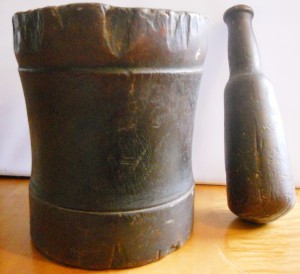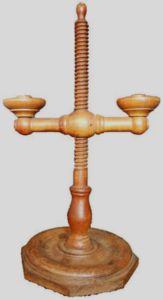Part I of our series on “Killer Stuff and Tons of Money” – Seeking History and Hidden Gems in Flea-Market America
The first part of our interview series with Maureen Stanton starts with the question we posed:
“After spending time with Curt Avery and learning so much while writing this book, do you feel there is a solution where older generations can help bridge the gap to younger generations whereby helping to reignite the interest and passion for antiques and learning about Americana?”
This question has been a topic of concerned discussion in the antiques trade. There have been some efforts already, such as the ads run by the Antiques Council inviting antiques dealers and collectors to “mentor” young collectors. The antiques trade is comprised of thousands of small business owners, so it’s difficult to have a unified effort, as they do in the U.K. with their “National Antiques Week.” But each dealer could help cultivate future collectors and buyers, perhaps in the way that attorneys perform pro bono work. If each dealer committed to giving one or two talks per year in schools, or for community groups, you might begin to generate interest. (I’m sure some dealers are already doing this, but the effort could be expanded.)
Curt Avery, the dealer I shadowed for Killer Stuff, visited elementary and middle school classrooms with some objects, and taught history through material culture. He brought a 18th century mortar pestle to show how medicines and herbs were crushed before blenders and food processors. (The mortar shown is made of lignum vitae, one of the most dense woods; it sinksin water.) Or a 19th-century adjustable candle stand, and even a candle lantern used by police before flashlights or batteries or electricity.
All these old objects contain stories, so antiques present a great hands-on way for kids to learn about history, especially about the lives of ordinary people. Museums do this work when kids take class trips, but dealers could develop presentations for schools. Many dealers I met are lay historians; they’ve accumulated so much knowledge about the things they love, buy, sell, and collect. Dealers are generally self-employed, so they don’t get paid for time away from shows or shops, but I think it’s in the best interest of the trade for them to invest some time educating the next generation.
Some forward-thinking antiques show promoters, like Marvin Getman of New England Antiques Shows, have incorporated children’s events into the shows. At one outdoor show held in a beautiful horticultural park, parents and their families made a day of “antiquing,” with something for everyone. For adults, there were 75 dealers’ booths to peruse, and an on-site appraiser. For children, Getman had face-painting, and a performer who used antiques to show how things were done before current times, like an old washboard. The kids and parents both loved it, and it was a big success. Even if the kids don’t become antiques fans, the very idea of an antiques show was changed to a family event, which is appealing to younger parents, too.
I think the general idea is to find ways of reaching out beyond the typical audience for antiques, which marketing studies show to be middle-aged. But I’m optimistic about the next generation of antiques collectors and fans. I’ve seen more young people at shows in the past three years than I did when I started the book nine years ago. One phenomenon is the huge increase in popularity among the 20-30 crowd of anything “vintage”—it’s very hip now to be into vintage objects, styles, clothing. We can see this in the rapid rise and success of Etsy, the online vintage and craft site, but also in the vintage fairs that are popping up all over the country. There is a “green” element to antiques and used objects, which appeals to many buyers but especially to this younger demographic. The challenge will be to translate this group’s interest in 20th-century stuff to older, more traditional antiques. I became interested in antiques and history through the gateway of “vintage” and junk stores.
A few times when I returned from Brimfield and saw my 20-something nephew and his friends, we’d play a game we called, “What the hell is that?” where they guessed the purpose of the object—like a Revolutionary War bullet mold. They were fascinated, and it was fun. Many people of that generation don’t know what an antique is, or worse, they think antiques are stuffy or dull. That’s a stigma that the antiques trade will have to try to change. The good news is that once people are turned on to antiques, they see that it can be rich and interesting, and fun. I’ve received many emails and comments from readers who say, “I never knew antiques could be so interesting.”
To learn more about Maureen’s book, check it out here:
http://killerstuffandtonsofmoney.com/
First two people who leave a comment can receive a complimentary signed copy! Comment below and email your shipping address and we’ll get your copy out right away!



